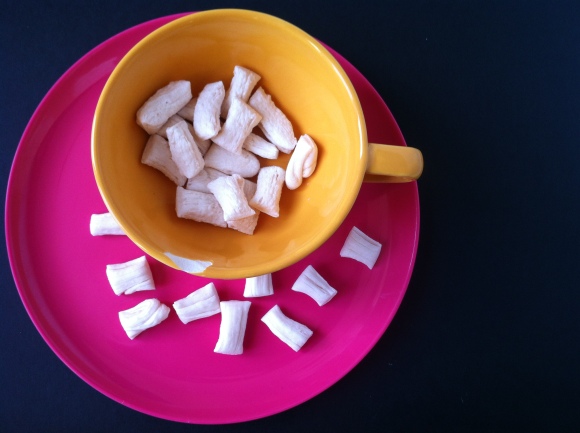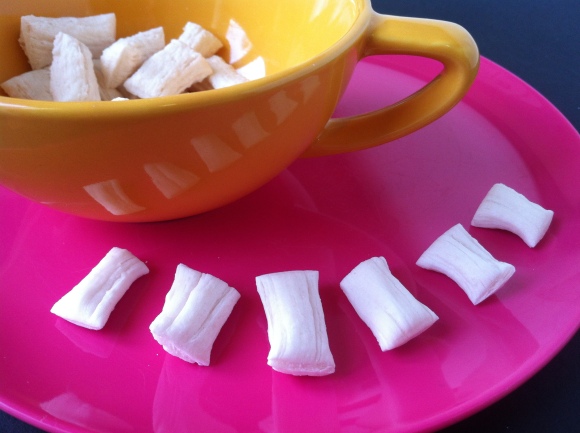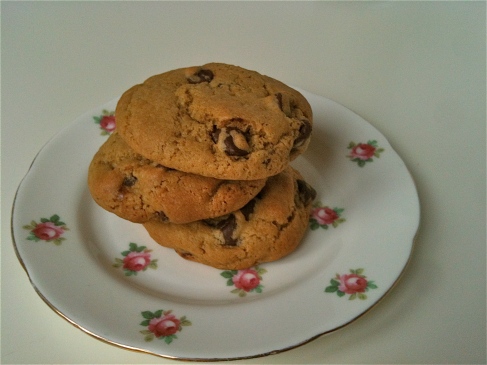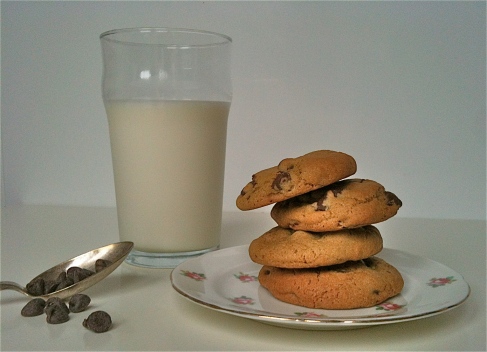January. Month of new resolutions, new beginnings, and official diet month.
Well screw that! Move over diets, I’m giving you three layers of fudgy chocolate cake, each smothered with a layer of salted caramel and a second layer of whipped caramel ganache frosting. Sugar, butter, cream, chocolate. This is the anti-diet cake. If you’re determined, then wait until February to make it. But then again, you could just have a slice instead of lunch, or give up entirely on that diet… Come on, I know you want to.

The salted caramel and sprinkling of sea salt is a perfect match to the rich chocolate, and it works beautifully. Try it. If the recipe looks like a little much to tackle all at once, I suggest making the salted caramel and the chocolate layers on one day and doing the frosting and assemebling on another day. You can easily freeze the cake layers and store the salted caramel in the fridge in an airtight container.

On a side note: Thanks to all the new people who have stopped by Sugar Cubed recently! It’s nice to know I’m not just talking to myself! Will you be breaking you January diets?

Sweet and Salty Cake
Adapted from Baked: New Frontiers in Baking , by Matt Lewis and Renato Poliafito
, by Matt Lewis and Renato Poliafito
For the classic chocolate cake layers
¾ cup dark unsweetened cocoa powder
1 ¼ cups hot water
2/3 cup sour cream
2 2/3 cups all-purpose flour
2 teaspoons baking powder
1 teaspoon baking soda
½ teaspoon salt
¾ cup unsalted butter, softened
½ cup vegetable shortening (or margarine)
1 ½ cups granulated sugar
1 cup firmly packed brown sugar
3 large eggs, at room temperature
1 tablespoon pure vanilla extract
For the salted caramel
½ cup heavy cream*
1 teaspoon fleur de sel
1 cup sugar
2 tablespoons light corn syrup**
¼ cup sour cream
For the whipped caramel ganache frosting
450g dark chocolate (60-70% cacao), chopped
1 ½ cups heavy cream*
1 cup sugar
2 tablespoons light corn syrup**
2 cups unsalted butter, soft but cool, cut into 2cm pieces
To assemble the cake
2 teaspoons fleur de sel, plus more for garnish
If you’re in the UK
*Heavy cream = double cream
**Light corn syrup = golden syrup
Make the classic chocolate layers
Preheat the oven to 325°F (160°C). Butter and flour three 8-inch (20cm) round cake pans, line the bottoms with parchment paper.
In a medium bowl, combine the cocoa powder, hot water, and sour cream and set aside to cool.
Sift the flour, baking powder, baking soda, and salt together into a medium bowl and set aside.
In a large bowl, beat the butter and the shortening on medium speed until ribbonlike, about 5 minutes. Add the sugars and beat until light and fluffy, about 5 minutes. Add the eggs, one at a time, beating well after each addition, then add the vanilla and beat until incorporated. Scrape down the bowl and mix again for 30 seconds.
Add the flour mixture, alternating with the cocoa mixture, in three additions, beginning and ending with the flour mixture.
Divide the batter among the prepared plans and smooth the tops. Bake for 35 minutes to 40 minutes, until a toothpick inserted in the centre of each cake comes out clean. Transfer the cakes to a wire rack and let cool for 20 minutes. Invert the cakes onto a wire rack, remove pans, and let cool completely. Remove the parchment.
Make the salted caramel
In a small saucepan, combine the heavy cream and fleur de sel. Bring to a simmer over very low heat until the salt is dissolved.
Meanwhile, keeping a close eye on the cream mixture so it doesn’t burn, in a medium saucepan combine ¼ cup water, the sugar, and corn syrup, stirring them together carefully so you don’t splash the sides of the pan. Cook over medium-high heat until a candy thermometer reads 350°F (176°C), or until the mixture is dark amber in colour, 6-8 minutes. Be careful not to burn the caramel, as I did this the first time round! Remove from the heat and let cool for 1 minute.
Add the cream mixture to the sugar mixture. Whisk in the sour cream. Let the caramel cool to room temperature, then transfer to an airtight container and refrigerate until you are ready to assemble the cake.
Make the whipped caramel ganache frosting
Put the chocolate in a large heatproof bowl and set aside.
In a small saucepan, bring the cream to a simmer over very low heat.
Meanwhile, keeping a close eye on the cream mixture so it doesn’t burn, in a medium saucepan combine ¼ cup water, the sugar, and corn syrup, stirring them together carefully so you don’t splash the sides of the pan. Cook over medium-high heat until a candy thermometer reads 350°F (176°C), or until the mixture is dark amber in colour, 6-8 minutes. Remove from the heat and let cool for 1 minute.
Add the cream to the caramel and stir to combine. Stir slowly for 2 minutes, then pour the caramel over the chocolate. Let the caramel and chocolate sit for 1 minute, then, starting in the centre of the bowl, and working your way out to the edges, slowly stir the chocolate and caramel mixture in a circle until the chocolate is completely melted. Let the mixture cool.
Using an electric whisk or mixer, beat on low speed until the bowl feels cool to the touch. Increase the speed to medium-high and gradually add the butter, beating until thoroughly incorporated. Scrape down the bowl and beat on high until the mixture is fluffy.
Assemble the cake
Place one cake layer on a serving platter. Spread ¼ cup of the caramel over the top. Let the caramel soak into the cake, then spread ¾ cup of the ganache frosting over the caramel. Sprinkle 1 teaspoon of fleur de sel over the frosting, then top with the second cake layer. Spread with caramel, then frosting, and sprinkle with fleur de sel. Then top with the third layer. Spread with caramel. Crumb coat the cake (i.e. cover the whole cake with a very thin layer of ganache) and put the cake in the refrigerator for 15 minutes to firm up the frosting. Frost the sides and top with the remaining frosting. Garnish with a sprinkle of fleur de sel.
This cake will keep at room temperature for about 3 days. If your room is not cool, keep in the fridge for up to 3 days. Remove the cake from the fridge and let sit at room temperature for at least 2 hours before serving.

























